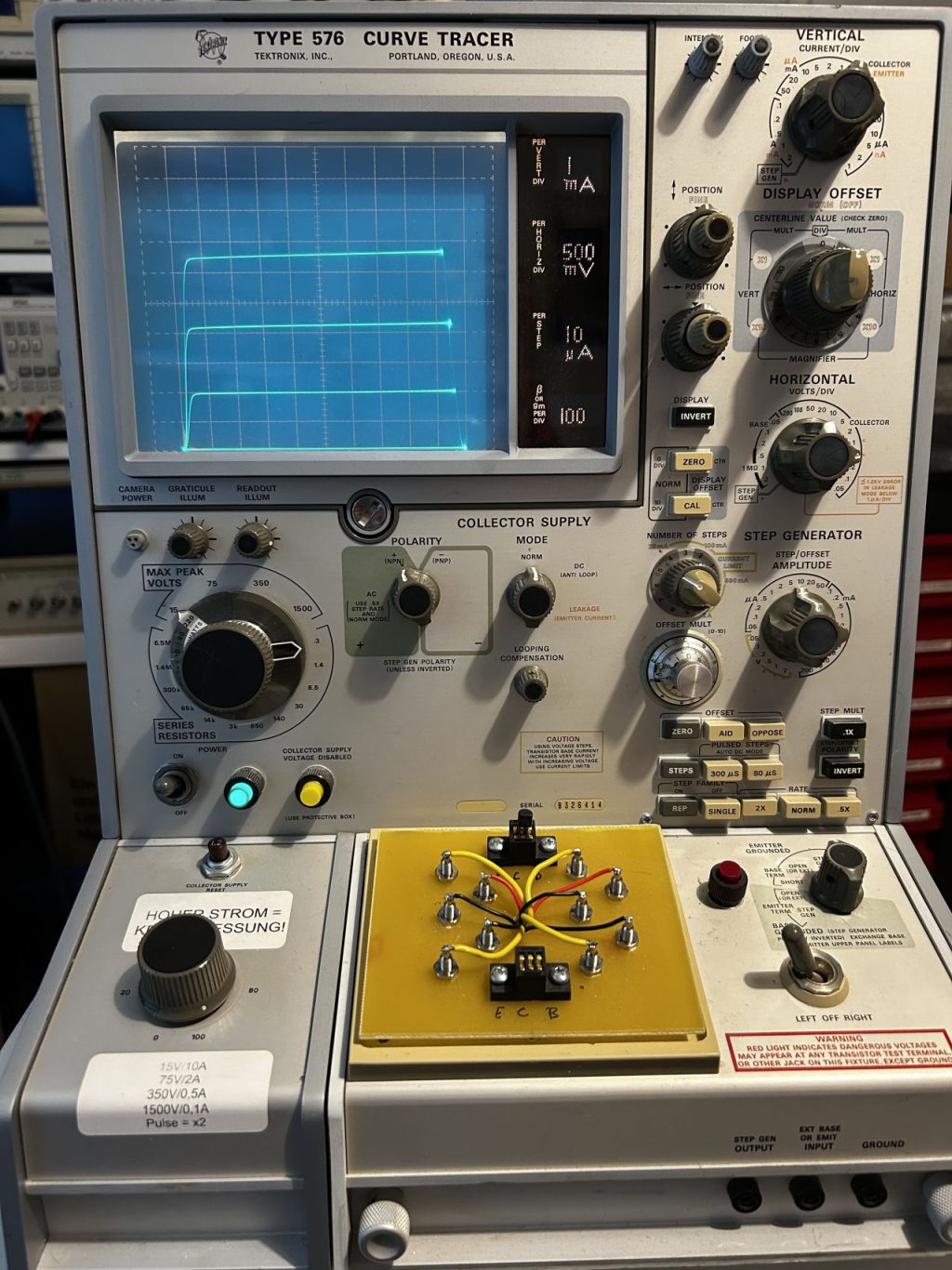
The Tektronix 576 – for a lot of professionals as well as enthusiasts an essential measurement device.
Even though the first device was sold around 50 years ago it’s still well known and used around the world.
Alternative devices are either extremely pricey or they don’t offer the performance of the 576.
Even nowadays the 576 is mentioned sometimes in semiconductor datasheets as a reference.
As most people know the 576 unfortunately doesn’t offer any kind of CPU or interfaces to process the measurement data in a digital way since it was not so common 50 years ago.
Therefore measurements are taken fully manually by reading the printed graticule according to the shown beam on the CRT.
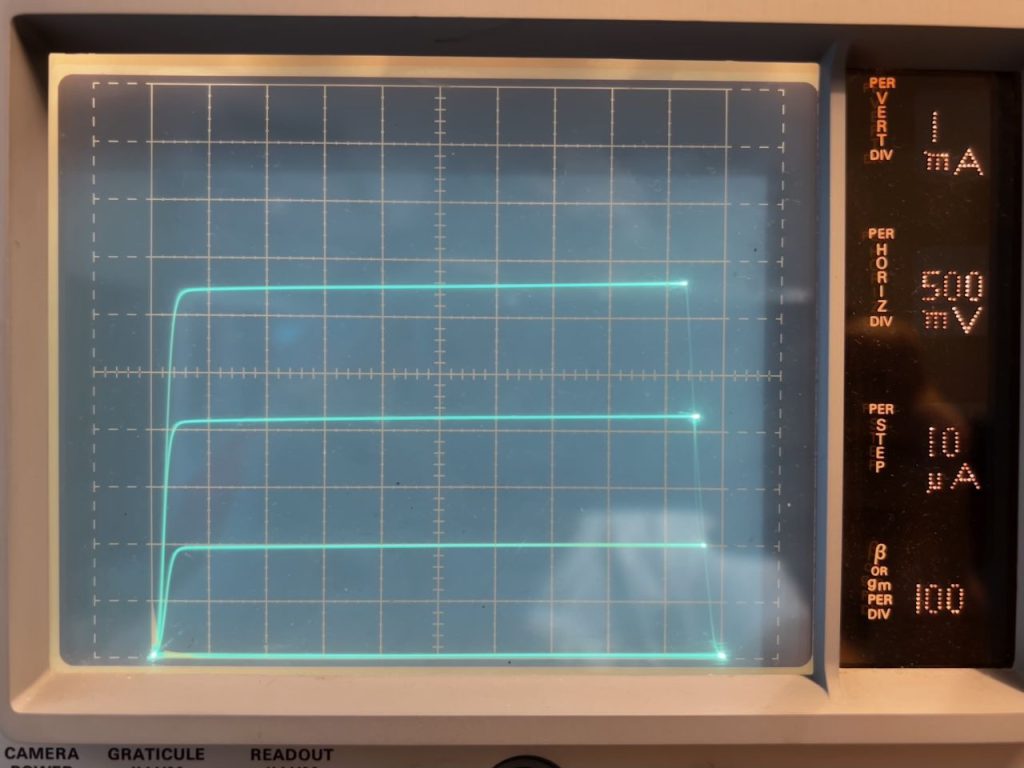
That’s actually really the biggest disadvantage of this measurement device – no digital storage or archive is possible.
Measurements can only be saved by taking a picture which makes comparison difficult.
Specially when selecting transistors for power amplifiers it would be nice to save data digitally to easily match transistors afterwards.
In Tektronix forums people are discussing since years about how to “digitize” a 576.
Some posts are almost 10 years old, still unfortunately no one really managed to come up with a solution.
Only a company in the US claims to have such a solution for around 5000$.
If you look into the offer in detail there’s no real documentation nor presentation.
The software looks kind of limited and you have to enter a lot of data manually.
Automatic measurements are not possible as well and the measurement overall looks very slow.
I own two 576 myself and I am using them pretty often (specially for selecting/matching transistors), so it would feel more then a dream to have some kind of digitizer for the Tek576.
Checking forums for years hoping there would be a solution one day… Unfortunately, it never happened therefore I spent last months in developing a solution…
…after 4 months engineering and a lot of spent hours it finally happened: THE VERY FIRST PROTOTYPE WORKS!

With a lot of effort, I managed not only to have a fully functional automatic measurement system for the Tek576, it even fits into the housing of the 576.
As a plus no technical changes of the case or circuits are needed.
So how does it work?
As mentioned, the 576 is fully analog built
The measurement of the DUT has a direct influence in real-time to the vertical (voltage) and horizontal (current) deflection plates of the CRT.
After many hours spent on the schematics this seems also to be the only reliable source of “measurement data”.
The problem is the design of the vertical/horizontal amplifier stage.
A lot of MOSFETs are used which are extremely sensitive. Even doing measurements with high impedance probes/measurement devices changes the output of the amplifier already significant.
After a lot of evaluation, the outcome was that only the amplifier output can be used reliable to gain the needed data.
This means we have to capture max. 250 Volts – deadly for every Analog/Digital converter.
Therefore a high precision voltage multiplier is needed to convert the 250 V to max 5V which results in a lot of loss of dynamic headroom which on the other hand means a high precision ADC is needed.
The next issue is that the vertical and horizontal signal has to be captured absolutely parallel without any time shift, otherwise the correlation between the signals is wrong and will result in wrong measurements.
Experiments showed that the usage of one single multi-channel ADC while switching the input channels fast caused already a too high time-shift.
Therefore 2 ADCs has to be used
To control the two ADCs a microcontroller is used which stores (according to the sampling rate) the ADC data into it’s ram providing it to the main CPU/DSP.
To have a correlation between the measurements it’s also needed to digitize all of the switch positions of the Tek576. Therefore two 16-Bit I/O Interfaces are used which are directly connected to the CPU.
As the CPU/DSP will need a higher demand of calculation power as well as a web-interface for the measurement GUI, a Raspberry 4 is used.
The Raspberry is rendering data from the ADC-Controller in real-time, computes them and also performs automatic measurements while providing them to the GUI.
To use the digital interface no additional software is needed. Simply connecting with a browser (e.g Firefox) to the DSP is enough.
The DSP also offers automatic sync and detection and calculation of each curve inside one measurement.
Measurements can be done live and at any captured point possible.
Of course measurements can also be saved or even recorded.
The Firmware of the ADC Controller is written in C while the software for the CPU/DSP is made in Python, PHP and JS.
Live-Framerate of up to 5fp/s is possible.
UPDATE:
Since so many people messaged me that they would also like to have this interface i decided to continue my development process.
After three more months engineering and development a fully „KIT“ is available which can be easily installed into every 576.
If you are interested simply message me.
You can see the Kit also live in action:
https://www.youtube.com/watch?v=L1nNEFJvU0s
Called “Tek576 – SAS” – (“Semiconductor Analyzer Studio”)
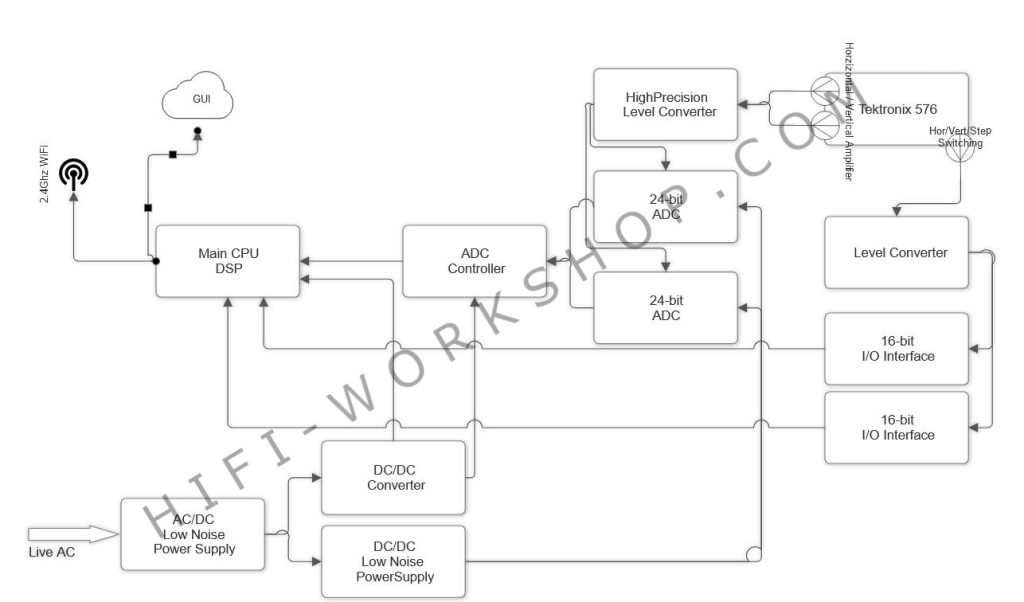
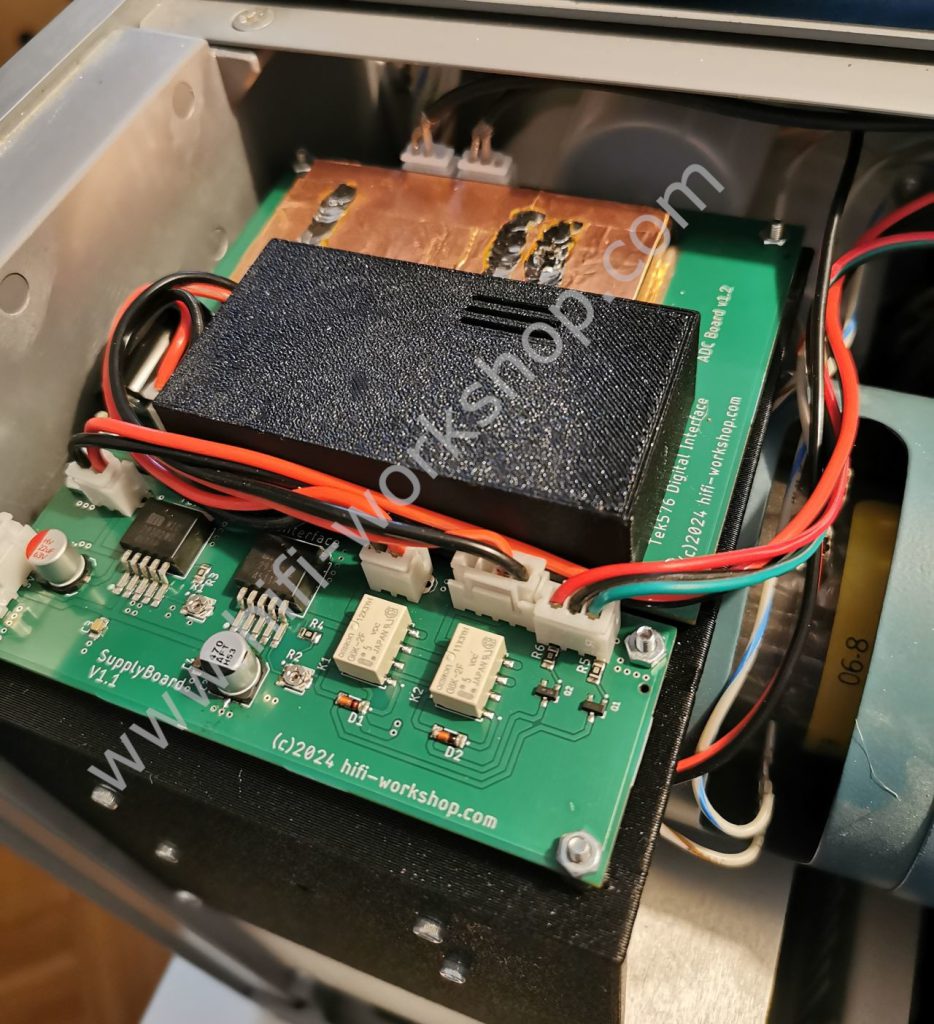
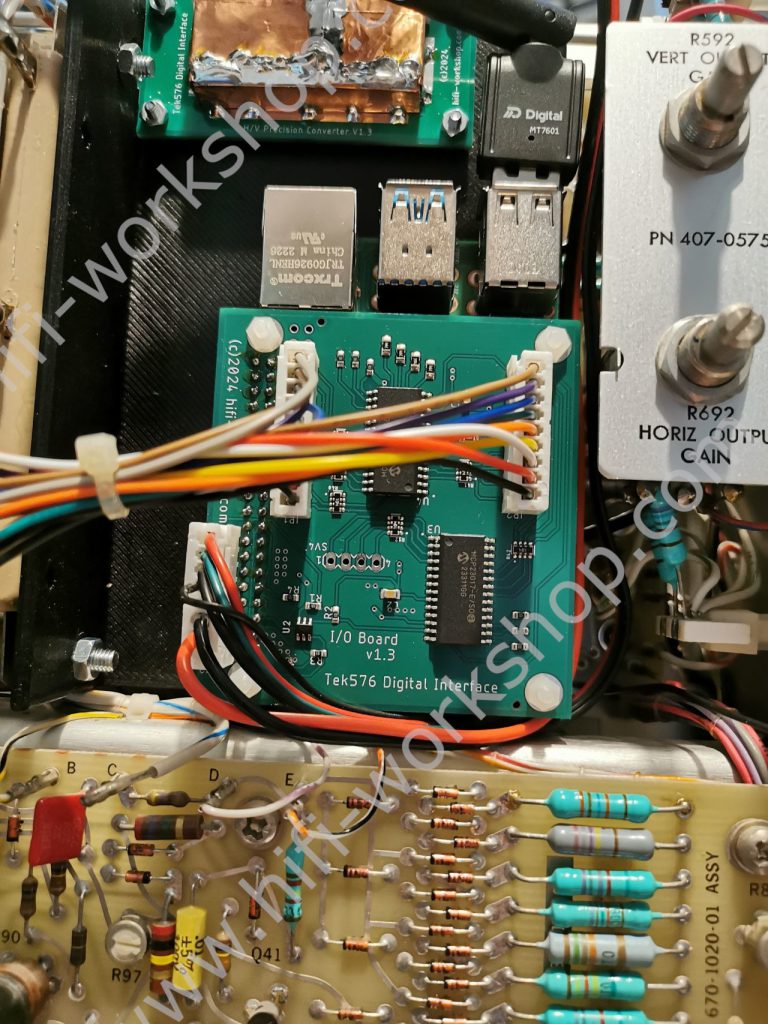
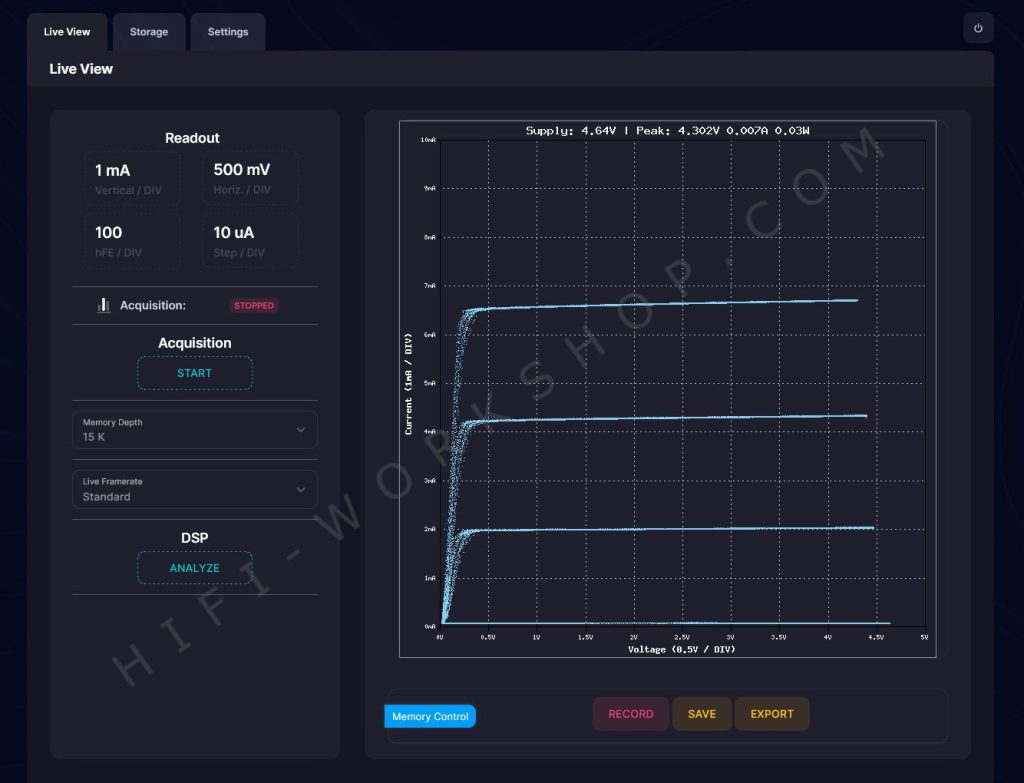
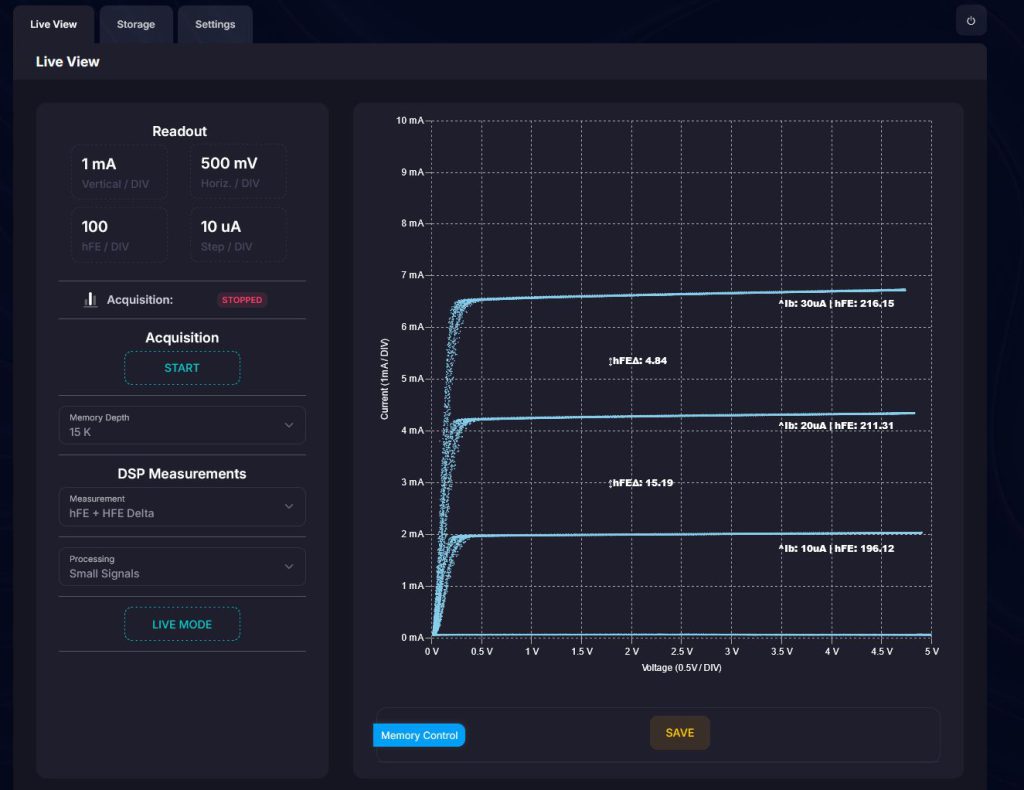
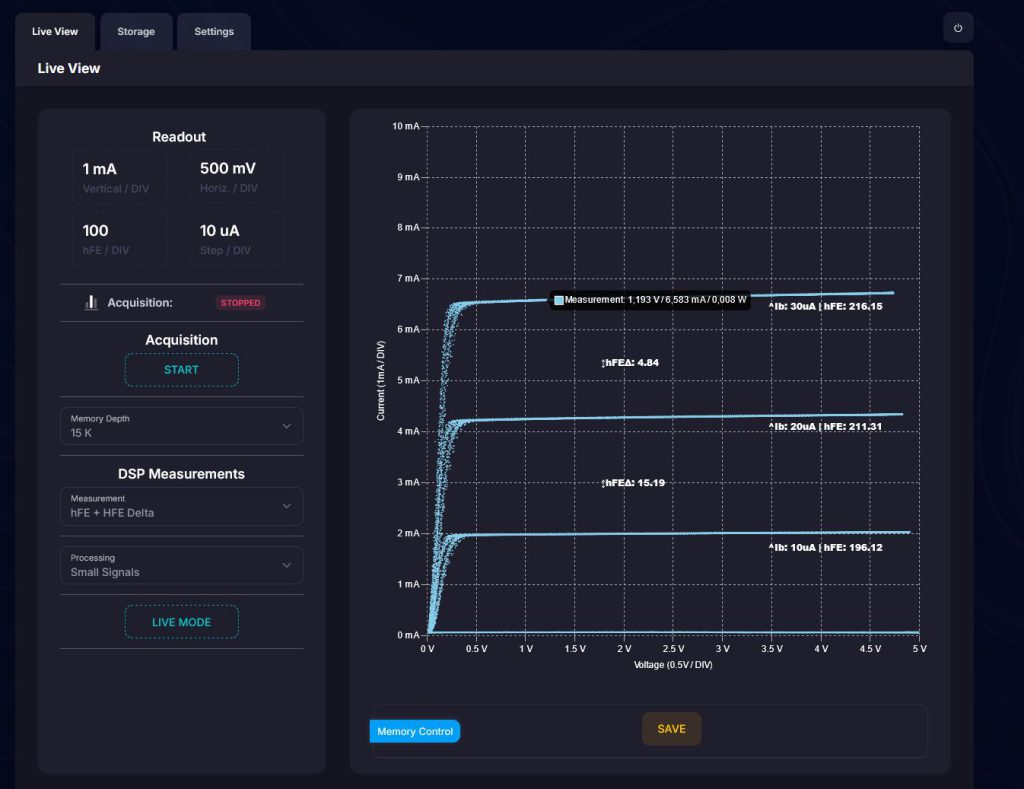
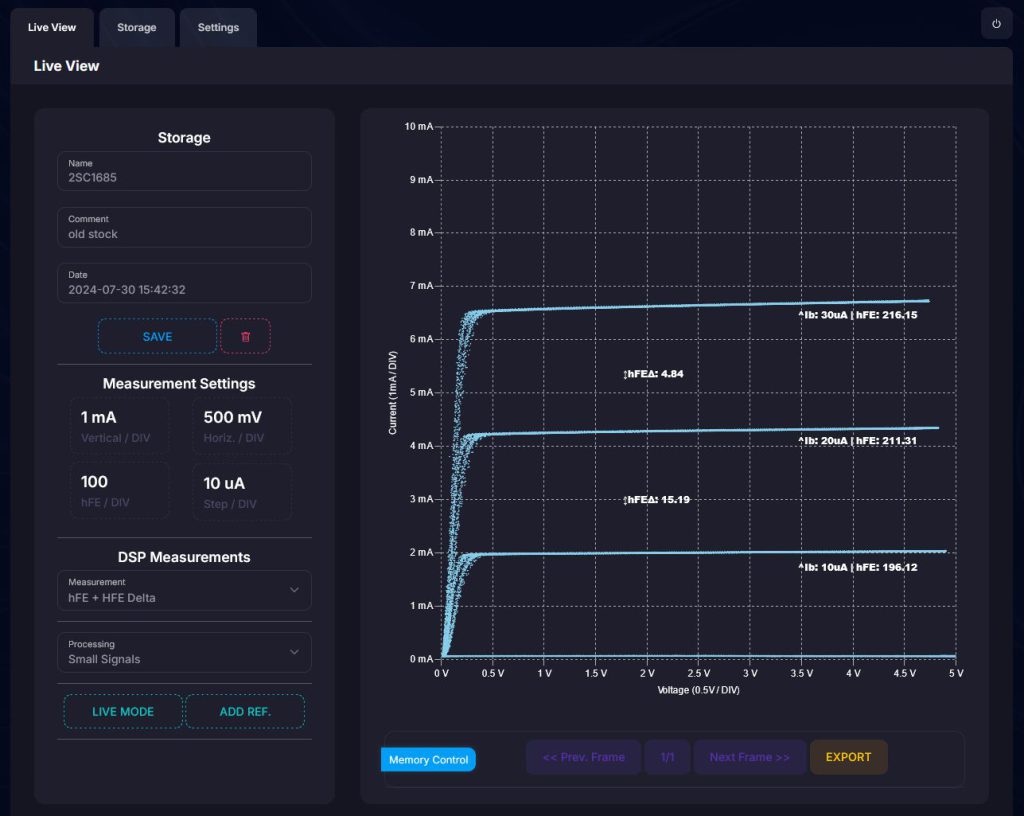
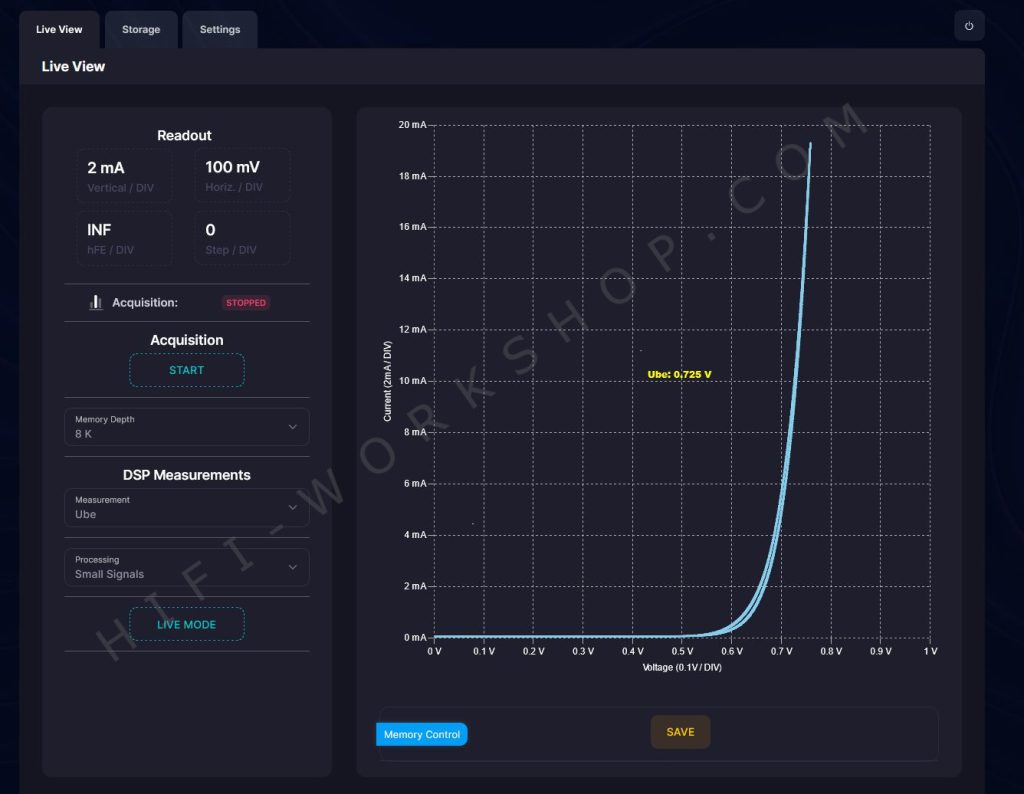
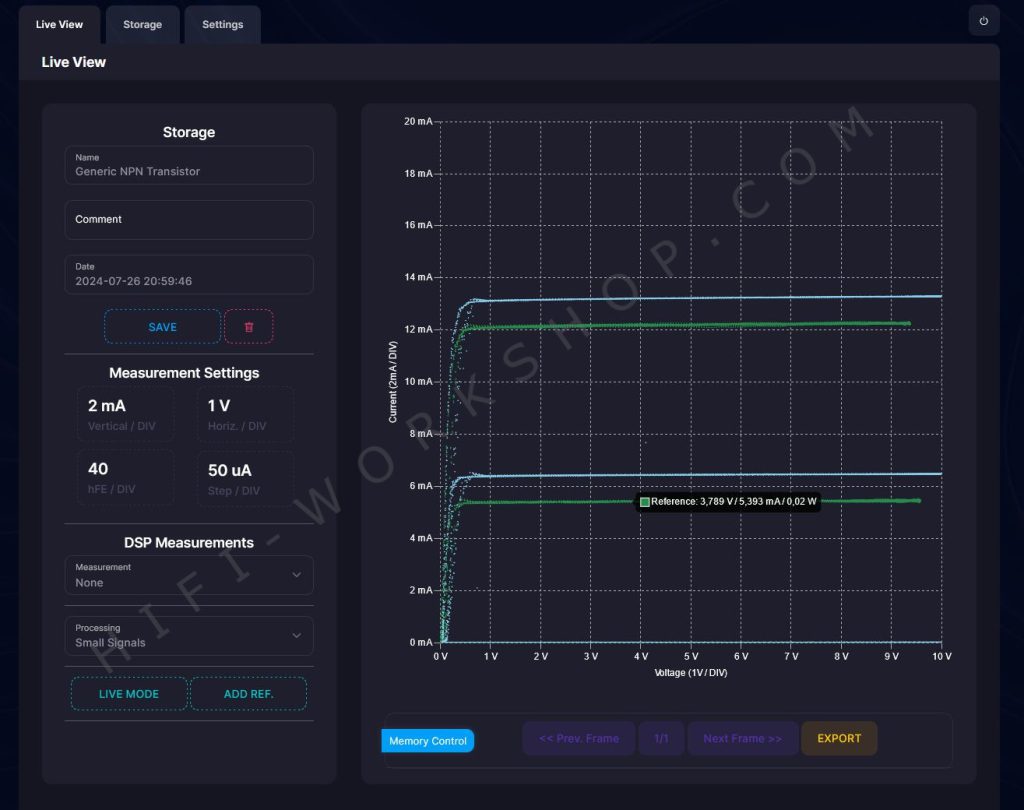
5 Antworten
Hello – impressive given the constraints. I like the UI as well.
do you plan to offer as a product or a kit?
Thanks
Alan
Hi and thanks for your message!
Yes, the interface will be available as a kit.
Please send me a message if you are interested:
https://www.hifi-workshop.com/?page_id=227
Hello,
I saw your message in Tekscopes and I have a 576 that waits for repair and more if possible with your interface. For sure, recording 576 measurements would rejuvenate this nice instrument.
Keep me informed!
hi,
Tek 576 CT
!! Wundebar !!
Danka !!
— Could we ( Groups io TekScopes ) please have the details, so that we can try this in our Tek 576 CT ?
Would you be able to supply a bare PCB & Software to help us get started ?
Questions:
Need to Calibrate to ensure that O/P results are correct ?
Possible improvements would occur faster with many people in the Group testing and suggesting advances.
thank you,
rick (Groups io ) gren
Hi and thanks for your message.
It will be available as a kit, so you just have to install it in your 576.
Only an adjustment for the amplifier is needed which is easily done through the big Horizontal and Vertical Gain potentiometers.
The UI of the interface will guide you through this